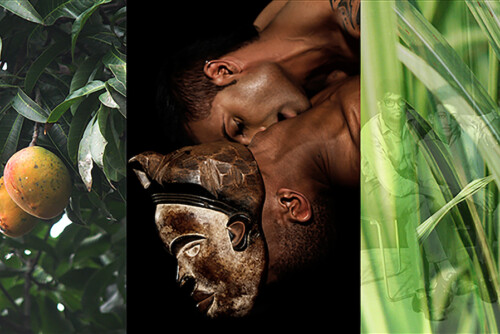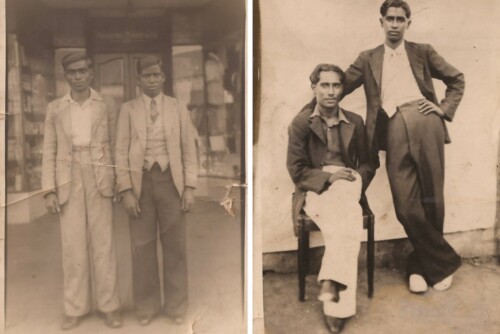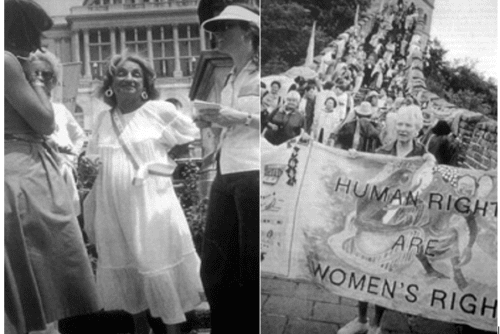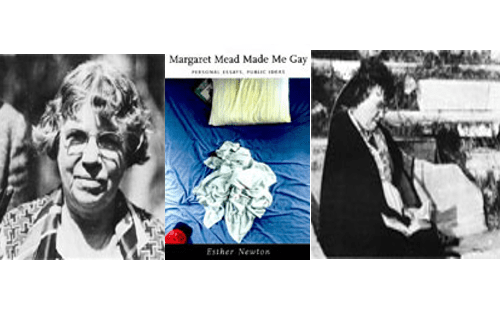W.E.B Du Bois’s 1928 novel Dark Princess has had a long and contradictory reception. On the one hand, scholars admire how it offers a prescient model of the possibilities in our own time of intergroup solidarity as well as astute commentary on hierarchies and constructions of race on a global scale.1 Such accounts recognize it as a central text in African American literary history, key to illuminating “how resistance, particularly to Eurocentric discourses of race, led to the radical recasting of Afro-Asian relationships as central to twentieth-century world revolutionary struggle.”2 On the other hand, most contemporary criticism on the novel begins with an assessment of its aesthetic failings, echoing the assertions of the white reviewers who were Du Bois’s contemporaries by noting that it is sentimental, melodramatic, and bewildering.3 In this vein, the critical record is best summed up by Amritjit Singh’s conclusion that “Dark Princess is undoubtedly more important as a social or political document than as literature.”4 A central element of this contradictory reception has been the perceived incongruence between Du Bois’s erudite, radical, and groundbreaking transnational politics and his arguably less successful depiction of those political investments through tropes of romance, sentiment, and desire.5
In this essay, I examine how tropes of romance in Dark Princess are not a key failure in the novel but rather are integral to illuminating the complex legacy of Afro-Asian interracial coalition that the novel itself has engendered – a legacy in which it is difficult to disarticulate Afro-Asian solidarity from patriarchy and Orientalism. As an ur-text in establishing Afro-Asian interracial solidarity politics,6 Dark Princess and its critical reception offer unique insight into how Afro-Asian racial alliances have long been historicized, imagined, and popularized through patrilineal genealogies. Vanita Reddy summarizes this trend in a discussion of the politics of Afro-Asian cross-racial struggle, explaining that scholars such as Bill Mullen, Vijay Prashad, and Fred Ho have charted the history of political collaboration between black and Asian leaders, “including Chairman Mao, Martin Luther King Jr., Mahatma Gandhi, Malcolm X, and Ho Chi Minh, among others.”7 This scholarship, she explains, provides the crucial groundwork for theorizing Afro-Asian cross-racial solidarity, opposition, and exchange, particularly as an anti-imperialist, anti-racist, and class-conscious project. And yet, as transformative as this scholarship has been, it “often neglects to account for the way that gender and sexuality ‘variegate’ these liberal forms, thus reproducing, however inadvertently, a heteronormative genealogy of cross-racial alliance.”8
In addition to the gendered biases apparent in scholarship that laments the use of romance as an appropriate vehicle through which to advance a radical political platform,9 critics have also very usefully articulated how the central interracial romantic plot of Dark Princess participates in the production of what Reddy calls the “heteronormative genealogy of cross-racial alliance.”10 My investments dovetail rather than depart with this latter strain of scholarship that cautions against imagining interracial solidarity primarily through interracial, heterosexual love. However, my aim is to investigate how romantic tropes and the idea of romance – more as a form of fantasy and desire than as a literary genre – not only carry heteronormative suppositions but also produce an attendant omission of feminist contributions to cross-racial alliance.11 I argue that Du Bois’s vision of Afro-Asian solidarity politics as he imagined it through the central interracial romantic relationship between Kautilya and Matthew Townes not only entrenches heteronormativity in the foundations of this cross-racial alliance, but compounds this heteronormative legacy with elements of misogyny, patriarchy, and Orientalism that are often overlooked as the collateral damage of the novel’s visionary perspective on transnational and cross-racial alliance.
In this essay, I first focus on the titular maharani, or princess of the novel, Kautilya, as the structuring romantic figure whose characterization indicates an incompatibility between femininity and radical race politics in the Du Boisian vision of Afro-Asian alliance. Then, I suggest that Kautilya’s conceptualization emerges from the questionable construction of “visionary” Afro-Asian alliances in Dark Princess through the relationship between Du Bois and Lala Lajpat Rai, an Indian nationalist organizer and radical proponent of home rule and Du Bois’s primary consultant on India in Dark Princess.12 Using Dora Ahmad’s research, I argue that this homosocial bond is the true romance of the novel: first, because it is the relationship most rooted in fantasy and desire, and second, because their masculinist alliance structures the interracial romance imagined in the novel itself. Exposing the potential origins of heteronormative romance in Dark Princess reveals the patriarchal homosocial bonds that have been established, obscured, and naturalized within Afro-Asian legacies of coalition.
The Romance of Orientalism
Set in in the mid-1920s, Dark Princess tells the story of Matthew Townes, a young African American man, and his thwarted desire to become an obstetrician. Townes is told by the dean of his medical school, “Do you think white women patients are going to have a nigger doctor delivering their babies?”13 Disillusioned with the idea that hard work and talent will help him achieve his goals, Matthew leaves New York for Berlin. While in Berlin, he intervenes when a white man sexually insults a mysterious woman of color, whom he later learns is the maharani Kautilya of Bwodpur, India. Matthew soon finds out that Kautilya is a member of an international coalition of “darker peoples” united in a quest to resist Western imperialism. She charges Matthew to provide her and the group with information that would allow them to determine whether black Americans are worthy of inclusion in this organization. Invigorated with this new task, Matthew returns to the United States and takes a job as a railway porter in Chicago. His work on the railroads allows him to take stock of African American social progress. Some time passes and Matthew, unable to get in touch with the princess, undertakes a suicidal plot, masterminded by a West Indian revolutionary by the name of Perigua. In retaliation for the lynching of a fellow Pullman porter, Matthew and Perigua decide to bomb a train transporting top KKK officials, but soon thereafter Matthew learns that Kautilya is a passenger on the same doomed train and prevents its destruction to save her life. Matthew is prosecuted and sentenced to prison for 10 years; Kautilya is deported.
At this point the novel becomes very episodic: the next section is written in a stark social realist style and is set mainly in Chicago. Here, Matthew finds himself involved politically and romantically with a savvy African American woman, Sara Andrews, who serves as secretary to Sammy Scott, an influential black local politician. Sara sees galvanizing political potential in Matthew’s story and manages to secure him an expedited release from prison. Through Sara, Matthew becomes a reluctant participant in local Chicago politics, they marry, and Sara, who is depicted as unloving and frigid, manages his political campaign for state legislature. Frustrated in their unconsummated marriage, Matthew spends more time alone in the apartment of his bachelor days, when one day Kautilya mysteriously reappears to rescue him from a life of political corruption. Matthew leaves Sara, and he and Kautilya (who has taken up hard labor in order to better understand the plight of the poor and working masses) have a brief but romantic reunion before she returns home to save her kingdom from British imperialists. Matthew returns to Sara, who sues him for divorce, and as penance for his indulgences takes up a job as a laborer digging tunnels for a new subway. At the end of the novel, Kautilya summons Matthew to join her and his mother at the Virginia farm where Matthew grew up. There he finds that Kautilya has given birth to their son, Madhu, “the Messenger and Messiah to all the Darker Worlds,” and that he has arrived just in time to participate in his own wedding with the princess.14
I linger over this plot summary to remind readers of how the pervasive melodramatic, romantic qualities of the text potentially overshadow its political ideologies. Indeed, whether critics read the novel more as a radical manifesto or unbelievable melodrama, they struggle with its self-assigned status as a romance and frequent use of popular and classical romantic tropes. Scholars account for Du Bois’s reliance on romance in the novel in three main ways. The first perspective holds that Matthew and Kautilya’s implausible relationship undermines and distracts from the novel’s grander ideological and polemical objectives to disrupt racial hierarchies by imagining an international, pan-ethnic coalition of people of color.15 To this end, Claudia Tate explains that the novel’s romantic themes feel out of place in a work of this period: as a formal structure, romance deviates from the aesthetic of the New Negro Renaissance and its focus on social realist imagery and tropes.16 She adds that, throughout the novel, Du Bois’s celebration of “the darker peoples” of the world is continually undermined by his doting and frequent descriptions of Kautilya as a light-skinned beauty,17 and conjectures that readers’ discomfort with romance in Dark Princess could also reflect a long history of denying black desire in African American literature.18 In sum, the aesthetic flaws and ideological shortcomings attributed to Dark Princess have often been explained as a result of Du Bois’s choice of romance to advance a social message, with the sense that, as Tate explains, romance in the narrative tends to reinforce the “ideological imperative of the status quo rather than its reformation.”19
In contrast, the second main strain of criticism on Dark Princess focuses on the subversive qualities of its romance. Critics with such a focus seek to explain not only why Du Bois named this novel as his favorite work,20 but also chose to frame its radical message through the genre of romance. Those who defend Du Bois’s formal choices commend his use of romance as a strategy to imagine the world as he would like it to be rather than as it was and to evade the exacting level of political scrutiny that it would have come under if he expressed his ideas in another form.21
The third strain of criticism – which my own reading aligns closely with – traces how tropes of romance in the novel reinforce a kind of patriarchal Orientalism.22 These critics argue that Du Bois draws an idealized, exalted, and Orientalized portrait of Kautilya, wherein she becomes a feminized symbol of the superiority of people of color and yet persists in the novel as a mere cipher, a political emblem turned erotic object.23 Such scholarship provides a crucial springboard for my own interpretation of Kautilya, wherein her characterization is not only vital for what it reveals about the Orientalist suppositions in which Dark Princess‘s radical politics is rooted, but also for how she must shed markers of femininity rather than race in order to be forged as a radical freedom fighter.
Kautilya’s depiction in the novel and its attendant interpretations have in salient moments incorporated a lingering suspicion about femininity as a productive force of cross-racial alliance. In part, this may be due to the fact that while there is a robust literary critical record that examines the possibilities and limitations of Du Bois’s overall gender and sexual politics,24 that record largely tends to engage most deeply with examinations of black masculinity25 and maternity26 in the novel, relegating its interracial romance and Kautilya to either the central failure or incomplete potentiality of the text.27 This critical focus on Du Bois’s depictions of black masculinity and femininity in the novel are fairly unsurprising given that he continues to be most well known as a scholar and theorist of “the problem of the color line” in the United States.28
However, recently critics working in Asian American cultural studies, Asian diasporic literary studies, and postcolonial theory have expanded upon the conceptual and historical uses of Du Bois’s work.29 Most critical accounts of the novel that focus primarily on Kautilya tend, as Madhumita Lahiri explains, to see her “in terms of the black woman she is either replacing or becoming,” to attribute her Indianness and brownness30 to a sublimated longing for whiteness,31 or to proffer educated guesses as to which historical South Asian figure(s) she represents or amalgamates.32
Of course, to some degree these interpretations of Kautilya can be attributed to the fact that she is so often figured in the novel as a complete caricature of Orientalist imagery, thus making it is difficult to complete a detailed, engaged analysis of her character development. The narrative has an exoticising, sartorial fixation on Kautilya, where she arguably seems to stand in for a mythic, eroticized, and hermetic version of India itself: “There was a hint of something foreign and exotic in her simply draped gown of rich, creamlike silken stuff and in the graceful coil of her hand-fashioned turban … There was a flash of jewels on her hands and a murmur of beads in the half-hidden necklaces.”33 Such images abound and Orientalist metaphors permeate descriptions of her diaphanous gowns, concealed jewels, and foreign beauty; in such moments an idealized, utopic India, rich with attendant descriptions of luxury and intrigue, map almost directly onto the persona of the princess herself.34 Generally, these passages reinforce the age-old feminization of India originating in both nationalist movements and colonialist interventions.35
About midway through the story, however, there is a striking description of Kautilya in which this romantic, Orientalist imagery literally renders visible the suppression of femininity in the service of Du Bois’s ideal vision of radical race politics. Frequently, Kautilya is depicted as veiled, cloaked, and shrouded, suggesting “another referent for Du Bois’s metaphorical veil of race.”36 After a prolonged absence, she mysteriously appears in Matthew’s study: “She came like a soft mist, unveiled and uncloaked before for him. Always she seemed to come thus suddenly into his life.”37 She is figured frequently as diaphanous, liminal, and ghost-like, and often appears in the most unlikely of places.
Kautilya’s veiling and unveiling alludes to the Du Boisian concept of the veil of race, wherein the “world … yields no true self-consciousness,” the “sense of always looking at one self through the eyes of others.”38 But I believe such imagery complicates the Du Boisian veil of race, and implies that the construction of racial consciousness subordinates issues of gender. Kautilya is cast in these moments as a projection dependent on Matthew’s male gaze. Further on, we learn that the princess has taken up manual labor in order to better understand the plight of the laboring classes. In her unveiling, Matthew sees that “she was different … Her hair was cut short … Her gown was loose, ill-fitting, straight; her hands, hard, wore no jewels, but were calloused, with broken nails. The small soft beauty of her face had become stronger and set in still lines.”39 There is a clear androgenizing force to this depiction, and it is only when Kautilya is stripped of overt feminine markers that her work as both laborer and freedom fighter becomes fully unveiled to Matthew and further confirms his love for her: “The Princess that I have worshiped is become the working woman whom I love.”40 Taken in its entirety, the passage suggests that the romance between Matthew and Kautilya exemplifies the incompatibility of femininity and radical race politics – an incompatibility that is particularly noteworthy for how it has established and shaped Afro-Asian coalition as a masculinist legacy more broadly.
The discordance between the feminine and Du Bois’s broader political vision is replicated in one of the most salient examples of the novel’s reception in South Asian American studies: Vijay Prashad’s foundational work The Karma of Brown Folk (2000). As one of the vanguard scholars of twentieth century Afro-Asian racial solidarity politics, Prashad’s interpretations of the novel are arguably integral to shaping its position in this genealogy. He writes:
Du Bois, who studied in Germany, knew of the community of Indian radicals … These Indians provide the social and historical basis for Kautilya, but these historical figures are not in any way aristocratic. If Du Bois was able to grasp the significance of these radical Indians, perhaps he felt the need to exoticize them and to gender Asia female. Nevertheless, from the standpoint of black America, India entered as a site of struggle against imperialism and racism. This is a significant difference from the world of the orientalists.41
Like Mullen, Prashad’s work on Dark Princess has been crucial in initiating analyses of the novel’s gendered Orientalism, and here he quite rightly signals one of the narrative’s most blatant and oft-noted gaffes.42 We know Kautilya is of the aristocratic classes, the maharani of a fictional principality.43 As Ahmad explains, the suggestion that a female aristocrat would become an international symbol of home rule “negates the historical record given that India’s nationalist leadership arose out of not its aristocracy but its professional classes.”40 However, Prashad figures this oversight as the feminization of a radical tradition of freedom fighters, another instance in a long history of gendering Asia female in the Western imagination. Unfortunately, his reading of Kautilya potentially reinforces rather than deconstructs the negative, Orientalist associations between femininity, weakness, and compliance in its lamentation that Du Bois imagined the Indian radicals of his time through a female character in his novel. Indeed, Prashad’s observations echo the novel itself, excusing the patriarchal Orientalism that informs Kautilya’s depiction as unfortunate side effect of early masculinist Afro-Asian coalition. Dark Princess thus demonstrates through its own logic and historical genealogy that the origins of Afro-Asian political solidarity, have in part been founded in the exclusion of femininity and feminist politics.
Masculinity and Afro-Asian Solidarity Politics
Perhaps nowhere are the limits of romance in Dark Princess more evident than in the patriarchal legacy of radicalism upon which the novel was conceived. Several accounts of the novel detail the relationship between Du Bois and Lala Lajpat Rai, an Indian nationalist organizer and radical proponent of home rule who was Du Bois’s primary consultant on India in Dark Princess.44 The dominant narrative of their collaboration holds that the two saw strategic possibilities in what they viewed as the similarities between Indian colonialism and the African American history of slavery and segregation, as a way to mobilize a common history of subjugation to white power that could unite Indians and black Americans.45 But, as Ahmad explains, Du Bois and Rai’s relationship and political understanding of each other was far more complicated than what early analyses of their alliance have told.46 Rai, who was “anxious to study the problems of the Negro … felt that they were comparable to those of the depressed classes or untouchables in India” – as Ahmad notes, “not to the plight of India as a whole, as Du Bois would have it.”47 Rai’s most strident stand against American racism came only when he sought to refute Katherine Mayo’s Mother India – a sensationalist report that depicted India as sexually depraved and barbaric – in his own nationalist account Unhappy India (published the same year as Dark Princess).48 At this point, Rai wrote to Du Bois to ask for specific instances of “the cruelties inflicted on your people by the whites of America.”49 Instead of the global solidarity Du Bois envisioned in his columns, Rai’s inquiry is an effort of “counterpropaganda.” While Du Bois constructs India as a guiding force for a worldwide anti-colonial struggle, Rai most explicitly acknowledges the white exploitation of black America when it “proves strategically useful.”50 While the utopic Afro-Asian alliance envisioned in the novel is not completely undermined when we situate the text within the particular historical circumstances of its production and circulation, contextualizing Dark Princess in this way reveals that “the romance of India, its ahistoricity, and the inconsistent analogy between colonized India and black America all demand that we approach the idea of a global South with caution.”51
Here we encounter another form of romance that gave shape to Dark Princess‘s production – what Ahmad terms Du Bois’s “romance of India,” embodied in this case in Rai. The interracial romance within the novel between Matthew and Kautilya obscures the true romance upon which the novel is based: the flawed cross-racial alliance between Du Bois and Rai. I invoke the notion of romance here not to suggest an actual interracial queer love between these two figures, but rather to emphasize the flawed fantasy and desire upon which cross-racial Afro-Asian solidarity has been built. In other words, I argue that the heteronormative romance that is seemingly at the core of the narrative is in fact structured by the possibilities and limitations of the transnational alliance imagined between Du Bois and Rai. Through the fantastical romantic projection of Kautilya, Du Bois imagines a more compliant collaborator than Rai, one who fulfills his desires for what he wants India to represent in the formation of Afro-Asian alliance. Du Bois’s and Rai’s relationship as a potential inspiration for the fictional romance of Dark Princess first cautions us through its own failures against the easy romanticization of cross-racial solidarity politics, and second demonstrates how tropes of heteronormative romance have been deployed in Dark Princess‘s long reception history to conceal the male-male relational bonds through which fantasies of intergroup solidarity have been built.
In a modern context, Dark Princess and Du Bois’s legacy more broadly continue to raise productive questions about the ways in which South Asian American and African American communities negotiate their relationship to one another through a complex politics of racial construction and questions of gender and sexuality. Given the ongoing relative scarcity of representations of Afro-Asian alliance that move beyond tropes of heteronormative interracial romance and romanticization, I look to the possibilities and limitations Dark Princess engenders in seeking out more expansive, intersectional modes of understanding Afro-Asian solidarity, opposition, and kinship.
- Paul Gilroy, The Black Atlantic: Modernity and Double Consciousness (Cambridge: Harvard University Press, 1993), 144; Bill V. Mullen, “Du Bois, Dark Princess, and the Afro Asian International,” Positions 11, 1: 219. [↩]
- Mullen, “Du Bois,” 219. [↩]
- Arnold Rampersand, “W.E.B. Du Bois as a Man of Literature,” American Literature 51, 1: 66; Claudia Tate, “Race and Desire: Dark Princess: A Romance,” in Next to the Color Line: Gender, Sexuality, and W.E.B. Du Bois, ed. Susan Gillman and Alys Eve Weinbaum (Minneapolis: University of Minnesota Press, 2007), 159; Laila Soraya Haidarali, “Browning the Dark Princess: Asian Indian Embodiment of ‘New Negro Womanhood,'” Journal of American Ethnic History 32, 1: 27. [↩]
- Amritjit Singh, Novels of the Harlem Renaissance: Twelve Black Writers, 1923–1933 (University Park: Pennsylvania State University Press, 1976), 123. [↩]
- Tate explains that origins of this disappointment with the use of romance as a unifying motif in Dark Princess. Contemporary readers of the novel were familiar with Du Bois as a polemical activist and founder of the NAACP in 1909, “when they looked for analysis of the race problem in Dark Princess and for practical ways to attack Western imperialism, they were rather disappointed, for what they found was a love story that functions as a melodramatic deterrent to the novel’s polemical objective.” Tate, “Race and Desire,” 159. [↩]
- Mullen explains that Dark Princess is a “central text in African American discursive engagement with the American, Asian, and international left.” Similarly, Gilroy argues that “it offers an image of hybridity and intermixture that is especially valuable because it gives no ground to the suggestion that cultural fusion involves betrayal, loss, corruptions, or dilution.” Mullen, “Du Bois,” 219; Gilroy, The Black Atlantic, 144. [↩]
- Vanita Reddy, “Afro-Asian Intimacies and the Politics and Aesthetics of Cross-Racial Struggle in Mira Nair’s Mississippi Masala,” Journal of Asian American Studies 18, 3: 233–4. [↩]
- Ibid., 234. [↩]
- Sydney Bufkin argues that while there has been much lamentation that Du Bois chose to write the novel as a romance, there has been only very superficial engagement with the how he deploys the formal and generic conventions of romance in the novel. Bufkin argues that the Du Bois’s choice of a less serious, fantastical genre was at least partially responsible for critical discord around it. Sydney Bufkin, “‘The True and Stirring Stuff of Which Romance Is Born’: Dark Princess and the Revolutionary Potential of Literary Form,” Journal of Modern Literature 36, 4: 65. [↩]
- Jigna Desai articulates a compelling critique of heteronormative romance in Dark Princess, explaining that Du Bois employs normative “gendered and sexualized tropes of heterosexual romance and family” to express his radical politics. Jinga Desai, Beyond Bollywood: The Cultural Politics of South Asian Diasporic Film (New York: Routledge, 2003), 72. Similarly, Alys Even Weinbaum explains that the novel is uncritically “heterosexist in the manner in which it (re)produces antiracist, anti-imperialist alliances. Alys Even Weinbaum, “Interracial Romance and Black Internationalism,” in Gillman and Weinbaum, Next to the Color Line, 116. [↩]
- The definition of romance that I employ throughout this essay borrows from Weinbaum’s summary of the duality of romance in Dark Princess. As she explains, Du Bois collapse the common usage of the word “romance,” understood most broadly as a love story, into the formal generic category of romance, the narrative form that takes on particular meaning in American renaissance literature as a genre that takes on political registers and is distinct in its capacity “to depict and resolve social, historical, and political conflict through resolution of narrative tensions.” Weinbaum, “Interracial Romance,” 100. [↩]
- Dohra Ahmad, Landscapes of Hope: Anti-Colonial Utopianism in America (New York: Oxford University Press, 2009), 170–4. [↩]
- W.E.B. Du Bois, Dark Princess: A Romance (New York: Harcourt, 1928), 4. [↩]
- Du Bois, Dark Princess, 311. [↩]
- Tate summarizes this critical response, and explains: “The reception of Dark Princess also reveal a historic preference for representing collective social arguments rather than personal desire in black literature.” Tate, “Race and Desire,” 160. See also Rampersand, “W.E.B. Du Bois,” 66 [↩]
- Tate, “Race and Desire,” 160. [↩]
- Ibid., 195. [↩]
- Ibid., 160. [↩]
- Ibid., 195. Here, Tate glosses Frederic Jameson’s argument that romance provides a space of privilege for the “transformational scene” of conflict and tension. Frederic Jameson, “Magical Narratives: Romance as Genre,” New Literary History 7, 1: 149. [↩]
- See Rampersand, “W.E.B. Du Bois,” 51. [↩]
- Ahmad, Landscapes of Hope, 146–7, 152; Bufkin, “True and Stirring,” 62; Lahiri, “World Romance,” 546; Alys Eve Weinbaum, “Reproducing Racial Globality: W.E.B. Du Bois and the Sexual Politics of Black Internationalism,” Social Text 19, 2: 37. [↩]
- Herman Beavers, “Romancing the Body Politic: Du Bois’s Propaganda of the Dark World,” Annals of the American Academy of Political and Social Science, theme issue on “The Study of African American Problems: W.E.B. Du Bois’s Agenda, Then and Now” (2000): 568, 260; Desai, Beyond Bollywood, 71; Mullen, “Du Bois,” 219). Mullen writes extensively of these political and historical inconsistencies in the text and it is key to his conceptualization of “Afro-Orientalism,” a discourse that he brands as “colonizing and decolonizing” the minds of African-American intellectuals during the interwar period. He defines Afro-Orientalism as “a signifying discourse on race, nation, and global politics constituting a subtradition in indigenous U.S. writing on imperialism, colonialism, and the making of capitalist empire.” Bill V. Mullen, Afro-Orientalism (Minneapolis: University of Minnesota Press, 2004), xiv, xv. [↩]
- Beavers, “Romancing the Body Politic,” 260; Mullen, “Du Bois,” 219; Tate, “Race and Desire,” 175. [↩]
- Mullen, for example, traces how an integral feature of Afro-Orientalism, particularly for Du Bois’s intellectual vision, was the incorporation of “patriarchal and paternal” ideologies “about female subalterns in the United States and India” and “Du Bois’s own romantic conceptions of the Asiatic.” Mullen, “Du Bois,” 218–19. [↩]
- See, for example, Beavers, “Romancing the Body Politic,” 250; Tate, “Race and Desire,” 173; Monica L. Miller, “W.E.B. Du Bois and the Dandy as Diasporic Race Man,” Callaloo 26, 3: 739. [↩]
- See, for example, Tate, “Race and Desire,” 162; Weinbaum, “Reproducing Racial Globality,” 37. [↩]
- Alston, Haidarali, and Lahiri offer fairly recent exceptions to this claim with readings of the novel that focus on the princess. Vermonja Alston, “Cosmopolitan Fantasies, Aesthetics, and Bodily Value: W.E.B. Du Bois’s Dark Princess and the Trans/Gendering of Kautilya,” 3, 1 (2011): http://escholarship.org/uc/item/8r74n6wq; Haidarali, “Browning the Dark Princess”; Madhumita Lahiri, “World Romance: Genre, Internationalism, and W.E.B. Du Bois,” Callaloo 33, 2: 537–52. [↩]
- Susan Gillman and Alys Eve Weinbaum, “Introduction,” in Gillman and Weinbaum, Next to the Color Line, 1. [↩]
- See, for example, Desai, Beyond Bollywood; Vijay Prashad, The Karma of Brown Folk (Minneapolis: University of Minnesota Press, 2000). [↩]
- Haidarali imagines Kautilya as enfiguring an alternative paradigm to the ideals of “new negro womanhood.” Haidarali, “Browning the Dark Princess,” 25. [↩]
- Lahiri, “World Romance,” 541. [↩]
- Homi K. Bhabha, for example, conjectures that Kautilya was based off of diasporic Indian revolutionary Madame Bhikaj Cama, and Alston suggests that she is the transfigured and transgendered fourth century male Indian political philosopher Kautilya. Homi K. Bhabha, “The Black Savant and the Dark Princess,” ESQ: A Journal of the American Renaissance 5, 1–3: 142; Alston, “Cosmopolitan Fantasies.” [↩]
- Du Bois, Dark Princess, 8. [↩]
- Ahmad makes a similar point, and explains that “India and Kautilya function not as a geographical or human reality, respectively, but rather as conceptual categories powered by the vocabulary and imagery of Orientalism” (159). She also argues that the Orientalist imagery associated with Kautilya’s material possessions captures the “ambience of elusiveness and possibility” that Du Bois felt India symbolized (155). For the purposes of this essay, I am more concerned with how these passages reinforce the Orientalist feminization of the nation in the novel. [↩]
- Partha Chatterjee, The Nation and Its Fragments: Colonial and Postcolonial Histories (Princeton: Princeton University Press, 1993). [↩]
- Tate, “Race and Desire,” 187. [↩]
- Du Bois, Dark Princess, 208–09. [↩]
- W.E.B. Du Bois, The Souls of Black Folk (New York: Dover Publications, 1994 [1903]), 2. [↩]
- Du Bois, Dark Princess, 209. [↩]
- Ibid. [↩] [↩]
- Prashad, The Karma of Brown Folk, 175. [↩]
- Ahmad, Landscapes of Hope, 167; Rampersand, “W.E.B. Du Bois,” 55. [↩]
- Ahmad, Landscapes of Hope, 167. [↩]
- Ibid., 171; Rebecka Rutledge Fisher, “The Anatomy of a Symbol: Reading W.E.B. Du Bois’s Dark Princess: A Romance,” CR: The New Centennial Review 6, 3: 91–128; Rampersand, “W.E.B. Du Bois,” 55; Arnold Rampersand, “Du Bois’s Passage to India: Dark Princess,” in W.E.B. Du Bois on Race and Culture: Philosophy, Politics, and Poetics, ed. Bernard W. Bell, Emily Grosholz, and James B. Stewart (New York: Routledge, 1996), 169. [↩]
- Rampersand, “Du Bois’s Passage,” 170. [↩]
- Ahmad, Landscapes of Hope, 170–3. [↩]
- Ibid., 171. [↩]
- Ibid., 173. [↩]
- Rai qtd. in Ahmad, Landscapes of Hope, 173. [↩]
- Ahmad, Landscapes of Hope, 173. [↩]
- Ibid., 174. [↩]






